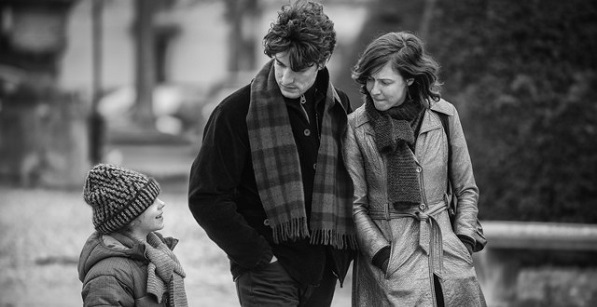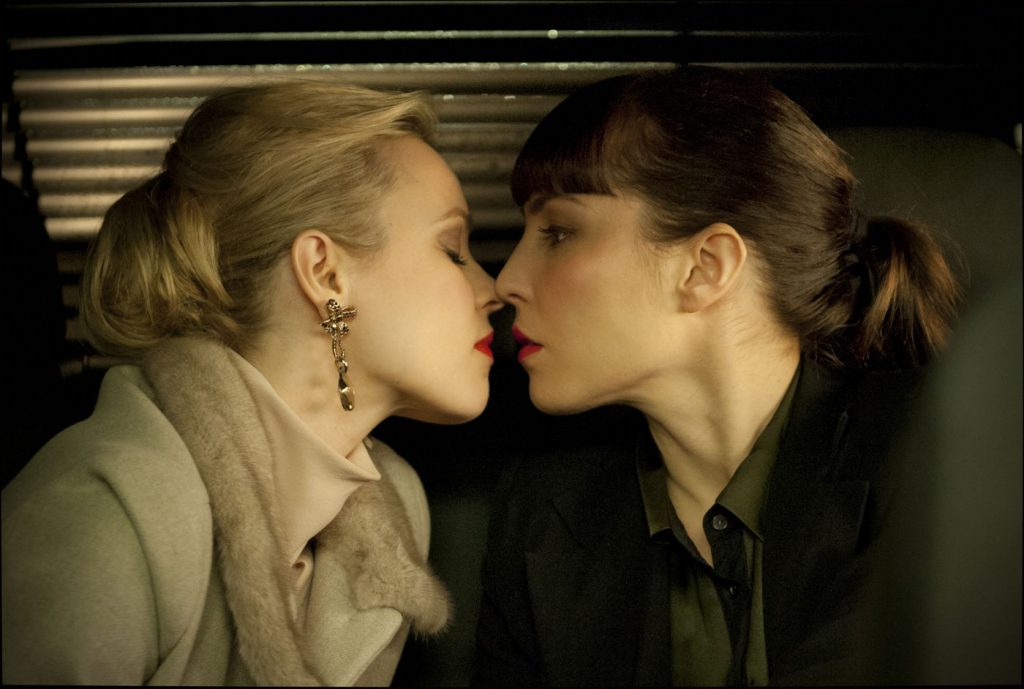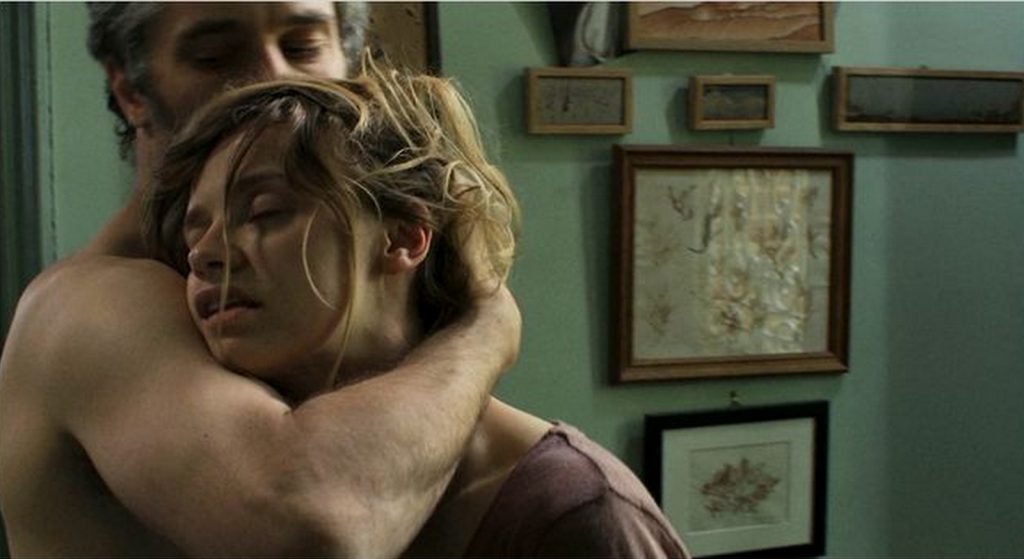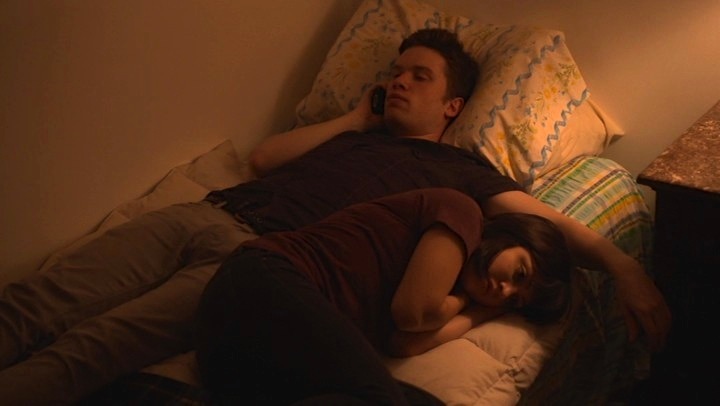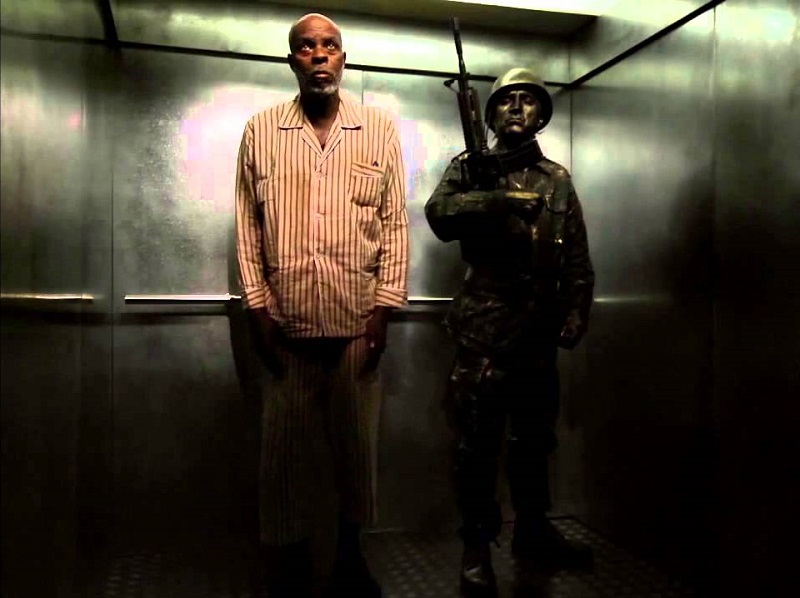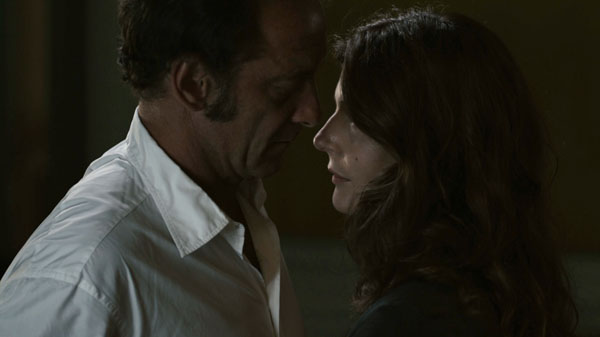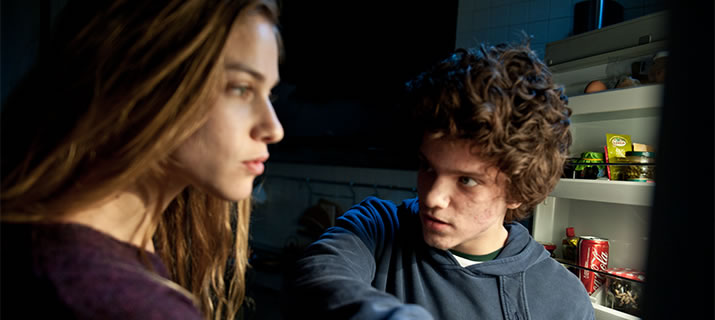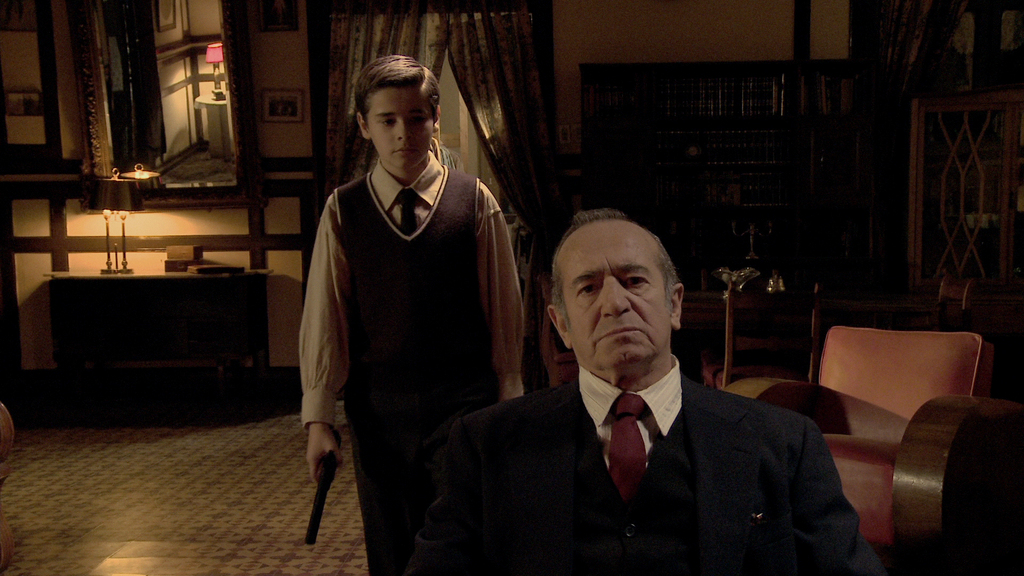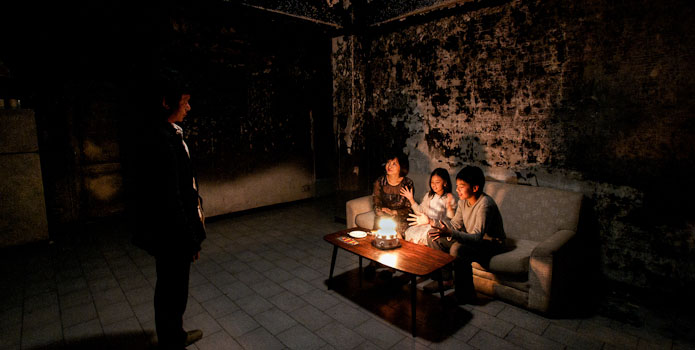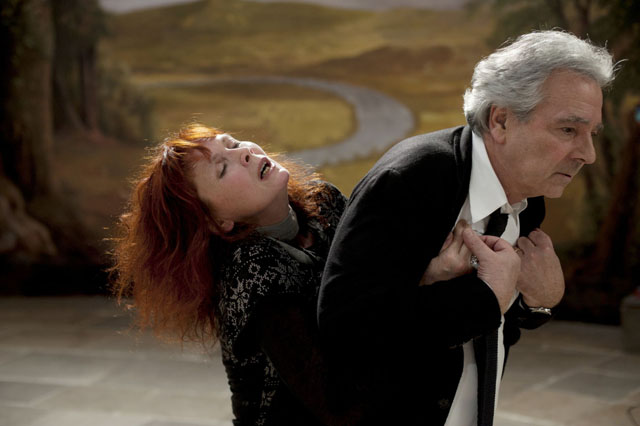Jealousy (Philippe Garrel)
This is the year’s best film. Its intense but muted drama comes, as often in Garrel, from a seemingly sudden realignment of the characters’ affections and affiliations: when Louis (Louis Garrel) leaves his wife Clothilde (Rebecca Covenant) for the hardly-working actress Claudia (Anna Mouglalis without her usual star glamour), a problem arises around the little daughter, Charlotte (Olga Milshtein, extraordinary). Who does she admire more, her mother or the new girlfriend? As Clothilde slyly probes this question and Charlotte prattles on, oblivious, we come to understand what the all-consuming emotion of jealousy is all about.
Passion (Brian De Palma)
One occasionally reads nonsense on the order of: “Brian De Palma is not a director of actors.” The wonderful “kissing confrontation” in Passion between Christine (Rachel McAdams) and her assistant’s assistant Dani (Karoline Herfurth), undoubtedly improved by the actors from what was in the script, proves otherwise: McAdams’ mock outrage as she rips her shirt open and begins to imagine her sexual harassment complaint–having just forced a kiss onto the (at this stage) helpless minion–is an hilarious expression of the power relations elsewhere expressed, in a much darker key, by the film.
My Wrestling Matches (Mes séances de lutte, Jacques Doillon)
Before seeing this amazing Jacques Doillon film–one of his strongest ever–I imagined the title meant something lofty, Assayas-style, like “my years of struggle.” The film itself leaves no ambiguity: it is the ferocious record of what happens when a man (James Thiérrée) and a woman (Sara Forestier) work out the “wild psychoanalysis” of their various relationship and family problems by hurling each other around, indoors, outdoors, through doors…You fear for the actors’ safety, but you’re also glad they agreed to go on this intense, therapeutic adventure with Doillon. An already underrated, overlooked masterpiece.
The Unspeakable Act (Dan Sallitt)
Among American releases of the year with a more-or-less independent aura, I was not crazy about Before Midnight or Frances Ha, but I am with Team Sallitt on the deep virtues of The Unspeakable Act. Two sorts of confrontation here: one dramatic, when teenage Jackie (Tallie Medel) tries to (verbally) erotically tantalize her very uncomfortable brother Matthew (Sky Hirschkron); and the other, more gradual, in the scenes (difficult at first, easier later) between Jackie and her shrink, Linda (Caroline Luft). This movie really takes you into subtle, complicated aspects of human behavior.
Sweet Exorcist (Pedro Costa)
This is the best episode in the omnibus film Centro Histórico–as chiseled and haunting as Costa’s finest work. Costa’s frazzled, pajama-clad icon Ventura finds himself confronted, in an elevator, with a silvery ghost (António Santos) of the seventies’ Portuguese Revolution; each cut reveals the pair in a radically altered configuration of postures and moods, as the politics of time (then and now) zip everywhere… You know how the last organ note echoes in a church? You follow that echo to its last, dying millisecond in Sweet Exorcist.
Bastards (Claire Denis)
Cinema has various ways of approaching the “unspeakable act” of traumatic abuse (of whatever kind). It can lay it out, unsensationally, right from the get-go, and then dissect the reasons for it, analytically. It can avoid the showing of it altogether, on ethical grounds, tackling it indirectly. Or it can take the Twin Peaks route: show it at the end, or at the dramatic high-point, and let the viewer cope with his or her own stunned disbelief. This is what Claire Denis does in Bastards: no spoiler here, but the final shots are as devastating as they are entirely logical, given the rotten world in which the action unfolds.
Me and You (Bernardo Bertolucci)
Almost the entire movie records a confrontation: down below the house, where all the boxes containing the buried traces of the past are kept, he (Jacopo Olmo Antinori) and she (Tea Falco) are teen misfits both hiding out, and they cannot avoid each other. Bertolucci long ago gave up his taste for transgression, but the veil of repression, of restraint, here works to better effect: when the bodies finally get together, in this cramped space, for a dance to Bowie’s Italian rendition of “Space Oddity,” it’s magical.
Night Across the Street (La noche de enfrente, Raúl Ruiz)
Ruiz, as we know, is the guy who theorized non-confrontation (polemicizing against Hollywood’s “central conflict theory”)–and practiced it all the way to the end of his wonderful life as a filmmaker. When it comes time for Don Celso (Sergio Hérnandez) to check out of the mortal realm–possibly killed, at gunpoint, by the young avatar of himself–he gets to hang out, for a while, in the giant barrel of the revolver that sealed his destiny: people pass by, landscapes are glimpsed, death and its after-life are rather ordinary, after all….
Stray Dogs (Tsai Ming-liang)
Tsai avoids long-simmering confrontations in his films – because their fallout is invariably cataclysmic. This film (reportedly his swan song, and what a way to go) has at least two scenes that nervously confront the possibility of a confrontation: the first, mid-way, seems so drastic in its consequences that it immediately splits the film in two, David Lynch style, into possibly real and unreal (or vice versa) zones; the second, near the end, sets up two people, one standing behind the other, for a long, long time, before any kind of gesture between them can take place.
You Ain’t Seen Nothin’ Yet (Alain Resnais)
Anyone who can’t tell that this movie is great is utterly blind and deaf. It’s the Eurydice Myth sliced and diced through several troupes, performances, narrative framing devices and split screens: you can say where it starts, but you never know where it will end (hence the title). With every move, every display of artifice, Resnais cuts deeper to his primal scene: the separation of bodies, abandonment, loss, death … and then, on the other side of that agony of mortal confrontation, resurrection and immortality. Immortality in art, at least; does any other kind matter?
For the complete list of year-end lists on Keyframe, go to The Year in Film: 2013.
For the complete index of the films on these lists, go to 2013 Year in Review: Indexed.

